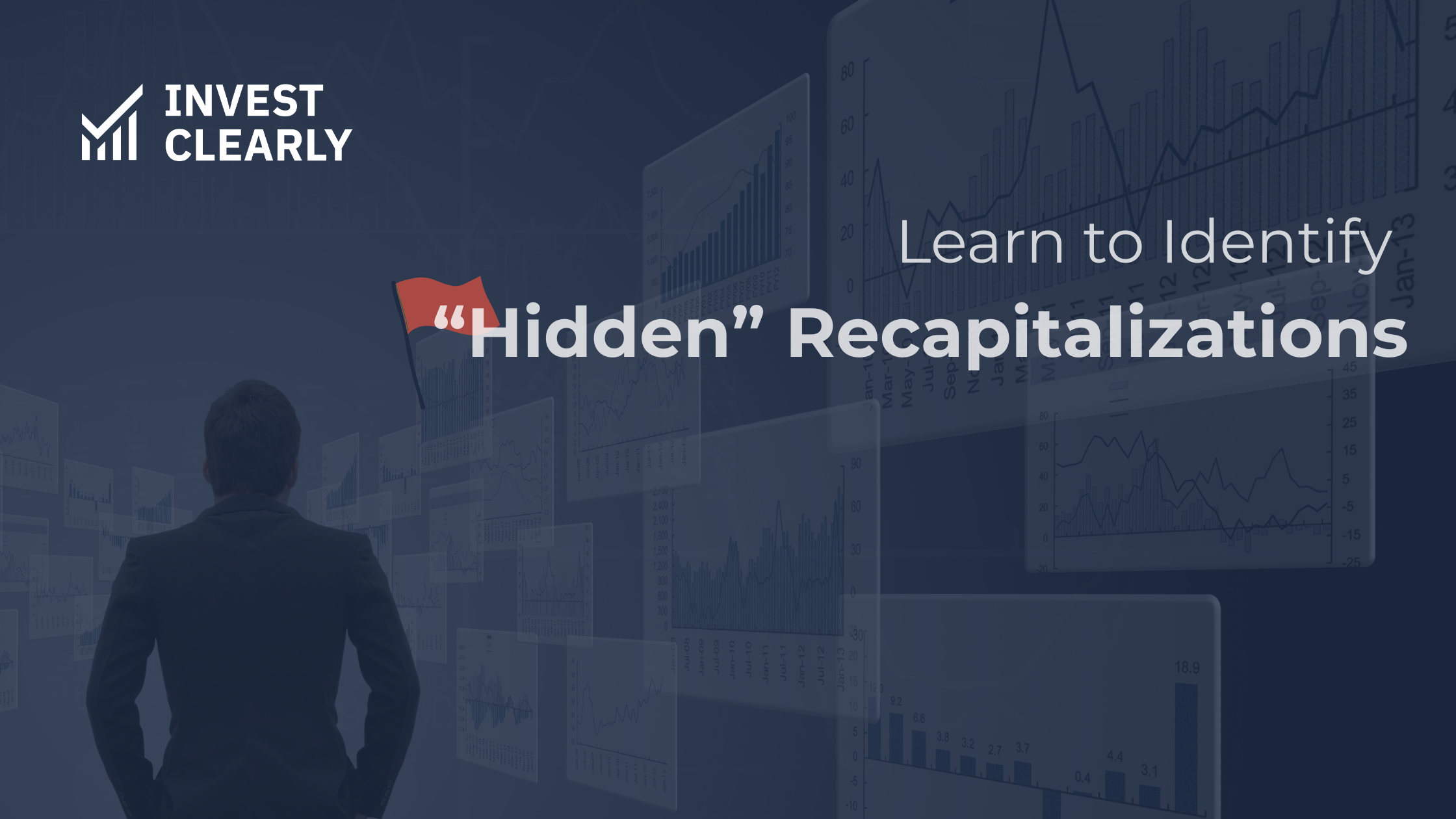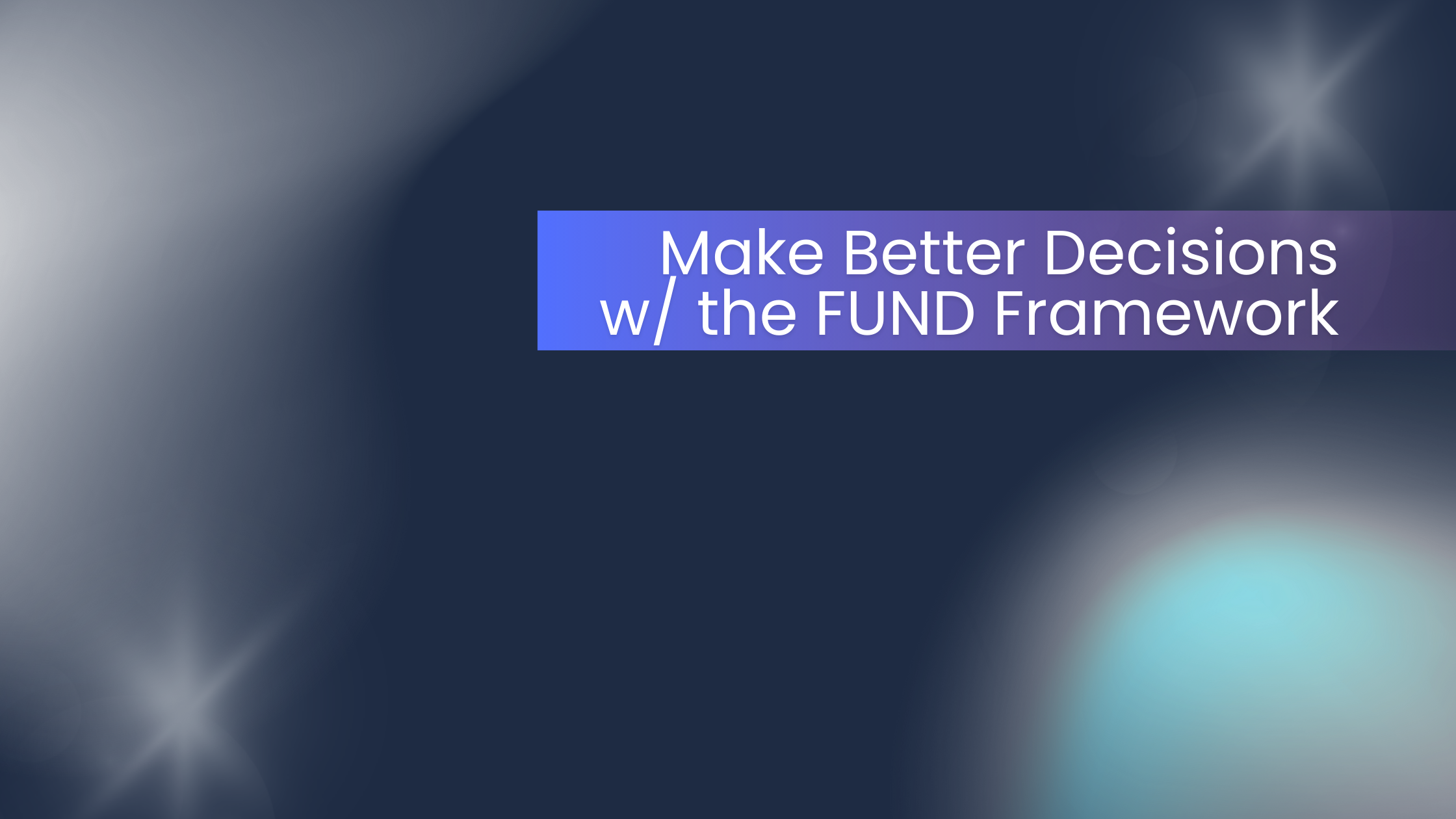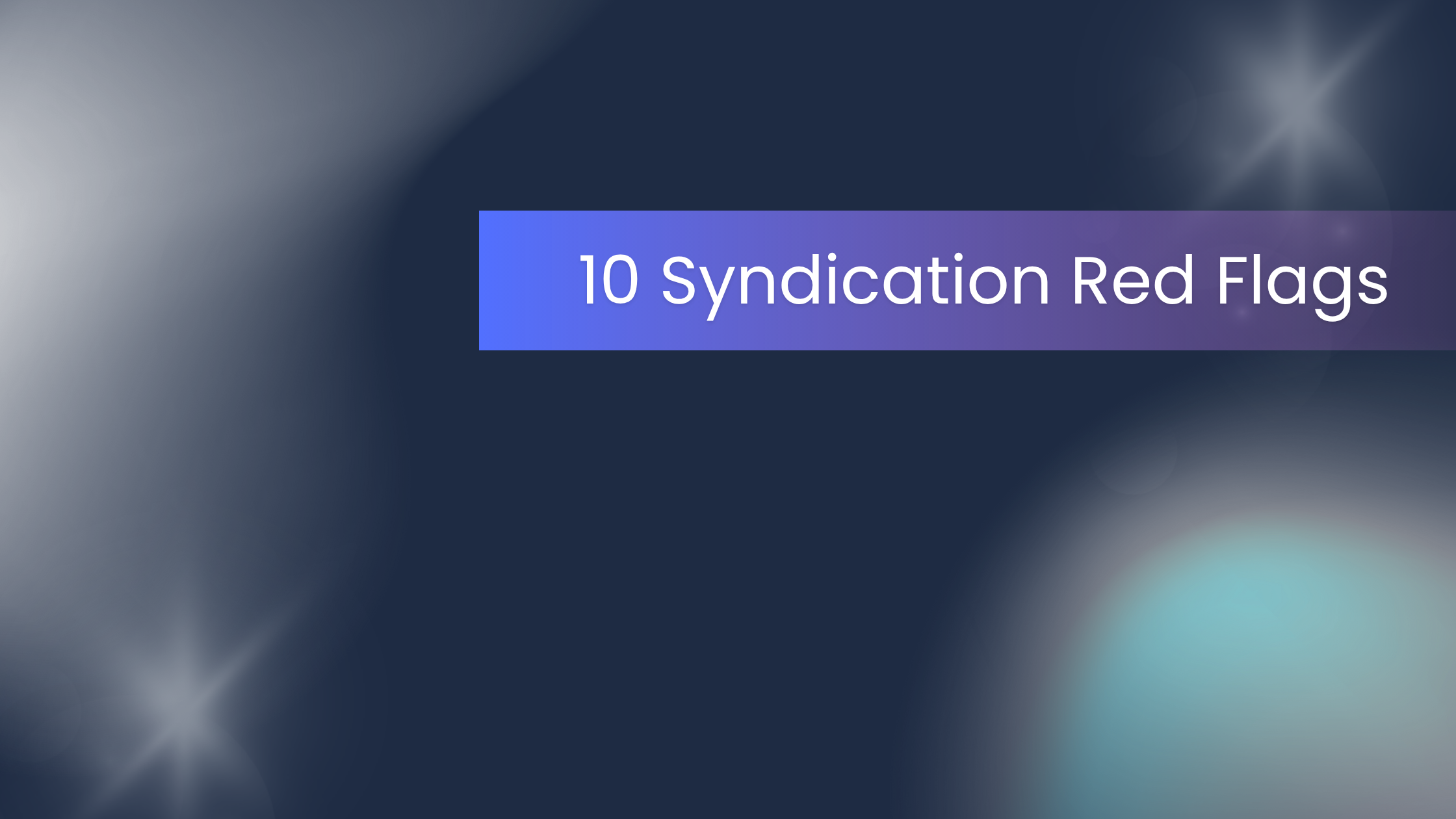.png)
How MJ REIT Builds Long-Term Investor Trust with Chris Reece
Never miss an Invest Clearly Insights article
Subscribe to our newsletter today
In this episode of the Invest Clearly podcast, host Pat sits down with Chris Reece, founder of MJ REIT, to explore how his decades of experience in institutional asset management led him to the cannabis real estate space. Chris breaks down MJ REIT’s unique, low-leverage strategy, their approach to risk, and how they’ve maintained over 33 months of consistent returns.
He also shares why transparency and education—not hype—are key to building investor trust, and why cannabis real estate offers a compelling, often overlooked opportunity for portfolio diversification.
Podcast Transcript
[00:00:02] Chris: I've been in institutional asset management for almost 30 years. Cannabis is one of the fastest growing industries within America. Every state needs hard assets—real estate for growing, processing, and dispensing to the public. If you enjoy that hobby and getting involved, rolling up your sleeves, then this passive investment may not be for you. We're just over $7 million in total assets and on a near-term trajectory to cross $10 million, but the strategy could run at $250 or even $300 million.
[00:01:29] Pat: Chris, thank you very much for joining me on the Invest Clearly podcast. By way of getting started, I'd love to learn a little bit about you, your background, and MJ REIT.
[00:01:39] Chris: Pat, first and foremost, thanks for including me and having me on the podcast today. I'm really excited about our time and going through our story. I'll start very briefly with a quick background. I've been in institutional asset management for almost 30 years—half of those on the public side and then I transitioned to private investments about 14 years ago. Over those last 14 years, I've had the privilege of working at a number of firms, starting different strategies. But the idea of getting into passive investing really came about when I launched MJ REIT in 2022 with the sole focus of providing investors with a stable asset and above-market monthly income. We've been focused intently on achieving those two goals, and that's what keeps us going every day on behalf of our investors.
[00:02:33] Pat: Awesome. You guys at MJ REIT are not in a unique asset class, but you have a unique approach to an asset class. Would you tell us a little bit about how you landed in the industry that you're in?
[00:02:43] Chris: It was interesting. I had the opportunity in 2009, 2010, and 2011 to work at a firm that started the first private BDC, which stands for Business Development Company. We had Blackstone as our sub-manager at the time. When I looked at why the BDCs were so successful for investors, it was really that they were plugging a hole in an area of the market that needed financing but simply didn't have it—that was middle market banking in America.
When I started MJ REIT, the reason I got into this particular space is I looked at a number of different industries, from infrastructure to precious metals, even crypto, because I wanted to find an industry that had the potential to generate outsized returns, risk-adjusted, for investors. I kept coming back to the cannabis real estate area. Cannabis is one of the fastest growing industries within America, and it has limited capital available because you can't go to Wells Fargo or JP Morgan for a mortgage. So you have high growth—demand—and you have a lack of capital to fund that demand. The third characteristic is that there are limited institutional players in the space today.
When you put those three characteristics together, I looked at the opportunity to generate a better risk-adjusted return as a perfect match. But unlike lending to an operator or an individual, we're simply financing a piece of commercial real estate, and by doing so, we're focused solely on the hard assets, with real estate being the crown jewel of those assets.
[00:04:20] Pat: Great. Do you find that when you're talking with new investors, are you convincing them why cannabis, or is it more your strategy or attracting the right investor? Are you having to convince multifamily investors to come over, or how are those conversations going?
[00:04:38] Chris: It's interesting because from an investor standpoint, if you take away all of—I'll say maybe noise is the right word—from being involved in the cannabis area, really what we do is focus on industrial and retail property. So it's no different than any other sector, with the exception that we're trafficking in a sector that is cannabis-related. Because cannabis is illegal, it has a slight nuance to how we can traffic in that particular area.
A lot of the conversations we have, I try to first and foremost focus on the asset overall. What's unique about what we do is we don't provide the borrower any bump in valuation associated with the improvements. So you and I get together, we buy an industrial building for $2 million because we were awarded a license in the state of California to cultivate cannabis. To get that building up to speed on growing cannabis, we may have to put $6 million in improvements—think about the irrigation, the lighting, HVACs, high-tech security.
In our mind, that building is worth $8 million because we bought it for $2 million and put $6 million in. But from the fund level standpoint, in every transaction we get into, we assume cannabis goes away and I need to find a non-cannabis tenant to replace that cannabis tenant. I can tell you, a standard industrial tenant doesn't have the need for 14 air conditioners and state-of-the-art security, nor do they want to pay for it. We would come into that situation and maybe value that property at $2 million or $2.25 million, and then we would simply underwrite a senior mortgage at about 75% LTV on that lower valuation.
While cannabis and the overlay of being within the cannabis space allows us to earn better risk-adjusted returns, the way we value these properties really is as a standard industrial or retail property. Assuming that I need to replace that tenant with a non-cannabis tenant allows us to have that downside risk mitigation that's critical for our investors.
[00:06:44] Pat: Sure. Are you finding that conversation to be easy to navigate with new investors? Are they understanding, or is it a challenge?
[00:06:53] Chris: It's a mixed bag because sometimes people get hung up on the cannabis overlay, and even though they understand our approach to it and the way we mitigate that risk, some investors have a moral disagreement with it—no different than alcohol or casinos. But the one thing that is undeniable is that unlike alcohol or casinos, there is a medical benefit to cannabis, and it's a proven medical benefit. So there's no going back as more and more states look to legalize.
Today, Pat, you have 41 states, DC, and a few U.S. territories that have at least a medical program in place, and more states coming on all the time. When that state comes on and has its own program, the interesting aspect with what we do is that you can't cross state lines with cannabis. So every state needs to have its own program to grow, process, and sell. That creates a barrier to entry. You can't have Philip Morris buy 500,000 or a million acres of land, grow cannabis, and transport it across the U.S. at a lower rate. The logistics simply aren't there yet.
Every state that has that program needs hard assets—real estate for growing, real estate for processing, and real estate to dispense that into the public. So it gives us ample opportunity to continue to deploy capital into an ever-growing market that still has hurdles in obtaining that capital.
To our investors and prospects that hear about us, sometimes there is the moral disagreement and they want to stay away from that, which I respect. But where we look at it is we're looking just to be a part of an investor's overall diversified portfolio. We want to be that fund that allows our investors to maintain that consistency, stay invested through the volatility, and then have access to that capital when an investor deems appropriate.
[00:08:56] Pat: Yeah, that's super interesting. Diversification is the thing right now. It's interesting even just seeing the advancement of Invest Clearly. I was just talking to somebody recently about the unique asset classes people bring up and are looking to invest in—straying away from the core multifamily and storage. We've had marinas come into play. Someone asked me to put a whiskey barrel fund on the site—we said not yet. It's really interesting. You guys just won the Best Ever Conference pitch slam, and one of their core things they were looking for was diversification, so that's awesome.
[00:09:31] Chris: That's an interesting point you raised because typically it's value-add multifamily that comes in and really dominates that conference. But to your point about diversification, one of the comments the judges made was that they have nothing against value-add multifamily, but they're kind of full of multifamily. Their allocation has filled that part of the bucket, so they're looking at unique areas that will offer additional diversification because ultimately they're no different than anybody else—they're looking to build a diversified portfolio.
One of the reasons I got into private investments years ago is when I was investing in the public markets, I thought I built a diversified portfolio until the tech crash of 2000. All of a sudden, the diversification that you thought you had and those low correlations all went to one, and diversification went out the window because in times of global market stress, everything tends to move in tandem.
But on the private side, if you have a longer-dated time horizon and you can weather the ups and downs of the markets—and for our portfolio, because we don't price on a daily basis, there's inherently a lower volatility pattern—you can stay invested through the ups and downs of the public stock market because your portfolio has some of that diversification in it, thanks in part to what we do, but also in other private assets that don't move as volatile as some of the other assets.
[00:10:55] Pat: Sure. Very interesting. You are the first REIT I've brought on the podcast so far. Is there any reason why you went that model over an alternative?
[00:11:03] Chris: Yeah. The main point with the REIT is it offers some additional tax advantages for our investors. Because we're taxed as a REIT and the fact that most of our return is distributable income that we pay on a monthly basis, as an investor, you're only paying taxes on 80% of that at the federal level. So your taxable equivalent yield that you would need to find on a comparable basis tends to be higher. For example, if we paid a 10% annualized distribution, you would need to find an asset with about an 11.3% return that would be taxed to get to the 10% return that we're providing. For our investors, it's really the idea that we're 1099.
Being investor-friendly was really important to me in starting this. Not only are we taxed as a REIT, it's a 1099. There's monthly purchases, monthly redemptions, monthly distributions, and monthly valuations. We want to be as transparent as possible because I also know that—and I'm not knocking a longer-term closed-end strategy where there's a five or seven-year life—but I look at it as, while that might be good, maybe in two years or three years or five years, I need to get to my money. For us, it was important to offer a liquidity program so that 12 or 18 months down the road, if something happens in your life and you may need to get to your capital, I don't want to be one of those strategies that ties your money up. We want you to come in for as long as it makes sense, create your own maturity schedule, and then when you're ready to move on, we have that liquidity program available.
[00:12:33] Pat: Yeah. That's great.
[00:13:14] Pat: You mentioned transparency—obviously that's the core of what we're doing here at Invest Clearly. What does that mean to you at MJ REIT? But what are you doing maybe differently than some other GPs out there as it relates to trust and transparency with new and current investors?
[00:13:29] Chris: Yeah, and I think those are the two most important aspects because building trust with somebody and providing that transparency is critically important for them to allocate to you. Think about our own personal lives—are we going to allocate to a strategy that we don't trust the people behind it? No. So building that trust, which is partly on the transparency, but I think also in addition to the transparency is setting the proper expectations. I think that's one of the main points that we've done differently than some of the other funds in the marketplace.
I will tell you that we are not your 2x or 5x type of return strategy. There are a lot of really good strategies out there, and you should potentially look at those if it fits for your risk budget. But what we're looking to do is just be that steady, consistent strategy where you don't have wild swings in your monthly valuations and we're consistently exceeding that 10% annualized distribution. For us, it's that transparency, which we check the box because we provide all of our investors monthly statements. We have monthly webinars. I do a monthly newsletter and a quarterly update on the fund in detail.
All of our investors know exactly what's going on, good and bad, inside of the portfolio because transparency is critically important, but setting the right expectation is critical for maintaining a good relationship and building that trust with our investors. We have a lot of investors that come in, they're interested in the strategy, they're like, "Wow, is this too good to be true?" They allocate—our minimum is only $25,000, so they may put in $25,000 or $50,000—and watch it for three months, six months, a year, and then come back and say, "Wow, everything that you gave us in the beginning, you've lived up to. So we're going to reallocate and increase our exposure."
That to me is just the biggest symbol that you've done a good job of building trust and maintaining those solid expectations that you set out in the very beginning. Because if you do stray from those expectations, trust goes out the window immediately. When you start seeing—if I tell you 10% is a great return, but if I tell you 12% or 15% and I deliver 10%, then those expectations are misaligned. Having the alignment of expectations and exceeding those expectations is really important for the fund and to our investors.
[00:15:57] Pat: Yeah, I agree. The setting of the expectations, the alignment of the communication, the transparency—and I think what you mentioned about your investors reinvesting is a metric I wish more GPs highlighted. In terms of an endorsement, that is the highest endorsement you could give: here's more of my money because I trust you and you've done well.
[00:16:19] Chris: Well, I think it's interesting not only from reallocating and upping their current investment, but we also have a dividend reinvestment program so you can reinvest those distributions. I think it's an interesting metric that we have—more than 75% of our current investors are taking advantage of that reinvestment. Number one, they don't need the cashflow, but they also see the success that we're having. When you do reinvest, there is also a financial incentive because you reinvest at 99% of the net asset value, so you get a 1% benefit if you reinvest. Point is, we have the vast majority of our investors taking advantage of that program.
[00:16:58] Pat: Interesting. Very cool. In terms of your team, I know I've spoken to a few of you guys. Are you primarily engaging with the investors? Do you have a team of IR reps doing that? What's that structure look like?
[00:17:09] Chris: It's interesting. We'll do both. We'll have the team as well as—I get out, I do a fair amount of podcasts. We do webinars on a monthly basis, as I mentioned, and then we try to hit a number of conferences. So I'm involved in all of those. But we also, on the IR standpoint, have a team that's reaching out individually to continue to not only maintain and build those relationships. I can't tell you the amount of times that we've had an investor that we spoke with a year ago or 18 months ago—we had a great conversation and they did not invest. We didn't write them off; they were on a distribution list, and we would reach out every once in a while. Then all of a sudden you get an email like, "Hey, I'm finally ready to come into the portfolio. I've been watching you guys for a year."
For us, that's just a testament to the strategy overall and the consistency of our performance. Back to the question, we have a mix of individuals that will make that outreach, but most importantly, getting back to the expectations and transparency, we want to provide you the information you need to do the diligence required for any investment, but specifically for ours. We want to make sure you have all your questions answered, and we really focus on an educational push over a sales push in any interaction.
[00:18:27] Pat: Yeah, that was going to be my next question. How do you balance that? What is educational versus what is marketing? Everybody's aiming for that top-of-the-funnel resource, but how do you balance that?
[00:18:40] Chris: Yeah. For us it truly is—I've had some missteps or misfortunes working with other firms that didn't necessarily approach it from an educational standpoint. When you try to sell performance first, it never—performance will come and go, right? But if I sell you performance and all of a sudden we fall under that expectation, you're most likely going to look to exit the strategy if you can.
But if I can position it properly and educate you around the merits of why this investment makes sense for your particular allocation and risk budget, then it's a different conversation. We're constantly ensuring that all the material that we put out is first and foremost on the educational component so that you can better understand what we're doing. After you understand what we're doing, then we get into, "Here's our track record, here's the performance, and here's the process and how we've consistently been able to achieve those expectations."
So first and foremost, we lead with education. Quite frankly, given the space that we're in, a lot of our prospects and investors may not have had exposure or really know about the cannabis markets overall. Although we're focused solely on the real estate side of the equation, just the macro education around cannabis, its merits, what's going on, the number of states that are legal, some of the facts that you can't cross state lines—every one of those states that have a program have a different set of rules and regulations. Every state is different. Everything is nuanced.
For us, it's the educational realm—why the space overall, and then what we're doing, how the process makes sense. And then finally, kind of proof is in the pudding, which we can provide the track record on a consistent basis.
[00:20:26] Pat: Sure. Do you find that since you are in such a unique approach that your decision cycles with investors are longer than, like, core? Do you find yourself having more touch points, more education, and then you have buy-in, or do you feel it's quicker?
[00:20:45] Chris: For us, it tends to be a little bit longer, mainly because if I come to you with a value-add multifamily deal, most likely, especially if you're in the space and the passive income real estate side, you've probably done diligence and have an idea of what that really means. If I come to you number one in a unique industry that you haven't had any exposure to and a strategy that's not a syndication, but it's a fund—part of the explanation and expectations is we start on the industry overall, and then it's how do we structure the strategy to take advantage of this particular industry.
A lot of it's education on what does it look like to be an investor—how often should you expect communication? What are any of the requirements that need to be considered before allocating to the portfolio? What's the liquidity program look like? All of those underlying details we take into account when we have conversations, but it tends to be a little bit longer than some of your other more mainstream real estate sectors.
I look at it as just our opportunity to educate because what I don't want to happen is for our investor to come into the strategy and not fully understand the strategy and then have a sour taste or feel like they didn't get all the information they needed before they make a decision. We don't want that. We want our investors to understand what we're doing and be aligned with how we're running the fund. If it makes sense, then we certainly welcome an allocation from that investor.
[00:22:15] Pat: Sure. Has that happened to you guys so far? Maybe someone who didn't fully understand the strategy and the framework?
[00:22:21] Chris: Yeah. Through the life of the fund—and I credit the expectations and clearly getting those set in the beginning—we've only had one investor that has redeemed out of the fund since we launched it in August of 2022. That investor was actually our first investor, and the reason that he sold was he was buying a shore house down in New Jersey and needed some extra money to put on a down payment.
Outside of that, we haven't had any redemptions in the fund. I know, like, it will come. But for us, we've not only set expectations, we've exceeded those expectations. So having solid performance and now—we just finished 33 months of performance, so we're only three months away from our three-year track record. Being able to point to that and say, "Past performance is not a guarantee of future results. Here's the macro environment, here's our process, and here's our track record."
Again, kind of going back to that, does it make sense for you? For the investors that have come in, we've been a valuable part of their overall diversified portfolio.
[00:23:25] Pat: Yeah, that's great. So when you think about the next stage for MJ REIT, what is the next level of scale look like for you guys? And then what's the plan to scale the expectation setting, scale the transparency, and everything you guys are doing now as you grow?
[00:23:42] Chris: Yeah. We're always looking to grow the fund and partner with investors that are looking to benefit from what we're offering. With that said, we have an extremely robust pipeline of deals given that scarcity of capital in the marketplace. Deals are episodic—they might not close for three months or four months, or they may close in a month because it's all about timing on a number of different parties involved.
We want to have a robust pipeline of deals that we're looking to allocate to. All in today, we have about $100 million of deals that we're currently going through. But given the scarcity of capital, we can be extremely selective in those deals and fund only the ones that we think are the lower risk and best risk-adjusted returns.
As we allocate that capital, what we're always looking to do is continue to diversify the portfolio in the notion that we want to ensure that from an investor standpoint, we're not concentrated in any one specific area. Our investors have access to that transparency and reporting that we mentioned earlier, and we're just continuing to execute on raising more capital to allocate to those deals.
I often will be very clear in the beginning when we have a conversation that this strategy is not a 20 or 15-year strategy because at some point, cannabis will be legalized. With the current administration, there's no near-term plans of that occurring, so look at it as at least a five to 10-year strategy. But at some point it will be legalized, or there will be some banking regulation that will allow some of your smaller or even regional banks to participate. With more capital, that means that instead of me lending on a short-term senior mortgage at 12% to 14%, or maybe even 15%, I've got to lend at 9% or 8% to be competitive in the market.
When that occurs, you should expect—and this is what I say—that our ability to generate returns will be dampened somewhat. But I offset that by saying we also have zero leverage in the fund. All of the distributions that we're earning are coming out of the interest that we receive off of the senior mortgages that we underwrite, and we use no leverage to juice up those returns. So in the event that instead of lending at 13%, we've got to lend at 9%, well, we could put 0.5 to one times leverage in the portfolio and still comfortably be able to meet that 10% targeted return. That's significantly lower leverage than, say, a Blackstone or BREIT that in some instances may have three times leverage in the portfolio. So we're still being conservative and prudent in our use.
Ultimately, we're looking to continue to raise capital and deploy in the marketplace. Today we're just over $7 million in total assets and on a near-term trajectory to cross $10 million, but quite frankly, this strategy we could run at $250 million, maybe even $300 million. As we continue to fit into an investor's portfolio, I suspect we'll continue to allocate capital across the board, ultimately generating a better risk-adjusted return for investors. When that time comes, whether it's five, seven, 10 years, and maybe you then at that point say, "Hey, it's been a great ride," that's when you take advantage of the liquidity program and then move your capital to another area of the market that you think shows more promise.
[00:27:08] Pat: Sure. Awesome. Awesome. Thank you. Chris, I know we're somewhat nearing towards the end here. I want to ask you the one question I ask everybody on the show: what part of passive investing do you think needs to die?
[00:27:20] Chris: It's an interesting question for me, and I don't know if anybody's taken this approach when you think about that question overall, but for me it's really: passive investing may not be for everyone, which sounds kind of counterintuitive to say when you're actually looking for passive investors to come into your strategy.
But in our initial conversation where you're interested in MJ REIT, if you come to me and tell me that you want to have an active role, you enjoy going through the diligence or maybe even finding a tenant or changing toilets or something like that in the multifamily space—if you enjoy that hobby and getting involved, rolling up your sleeves, then this passive investment may not be for you. At least for the bulk of your portfolio. That doesn't mean that you can't have exposure to passive investments and also add to that some hands-on active investing by buying a couple or maybe even a bunch of different multifamily units.
But for us, it's just making sure—getting back to what we started with—that the alignment is 100% solid between what your expectations are and our ability to deliver on those expectations. So for me, it's just understanding that what passive investing, I think, does work for most people. Again, if you are somebody that wants to roll up your sleeves and go out and find tenants, then you need to look at active investing versus passive.
[00:28:49] Pat: Yeah. Yeah. That's great. Too many times people are pushed towards passive when they are more of that active operator, so that's great.
[00:28:58] Chris: Yeah. I was going to say, because sometimes it's like the soup du jour, right? You want to—you think it's the great thing to do. And then you realize, "I'm kind of bored. I'm getting my monthly check, but I want more. I want something to keep me active."
[00:29:11] Pat: Yeah. Yeah, 100%. Okay. Chris, before we wrap up, I know we talked about the fund a little bit in the discussion about scaling. Anything else you want people to know about the fund before we wrap up?
[00:29:22] Chris: Yeah, I think we've covered most of it. Just as kind of a recap, we obviously are taxed as a REIT and there's a tax benefit for investors, but primarily our main focus is really providing that above-market monthly distribution to investors. We've consistently exceeded that in 33 of the past 33 months, so 100% of the time—being three months away from our three-year track record. We're constantly looking to really fill that void in the marketplace, ultimately to generate better risk-adjusted returns for investors.
I would also say that we have a bunch of information available for those that want to reach out on mjreit.com, which is the website. We would be honored to have a conversation in more detail about whether or not it makes sense for each individual investor.
[00:30:08] Pat: Fantastic. That's great. So mjreit.com. And if people want to follow you, are you active on social media?
[00:30:15] Chris: Yeah, social media. You can follow me personally on LinkedIn, or of course you can follow MJ REIT on LinkedIn as well. Chris Reese—if you type in my name, it'll come up. I have a bunch of different followers. Also active on socials as well, both Instagram and Facebook under MJ REIT.
[00:30:36] Pat: Awesome. Chris, thank you so much. It was great chatting with you. It's been great getting to know you. You do have a presence on Invest Clearly. For the listeners, feel free to check out the reviews on MJ REIT on Invest Clearly and reach out to Chris if you're interested.
[00:30:48] Chris: I appreciate it, Pat. Thank you so much.
[00:30:49] Pat: Thanks, Chris.
Written by
Invest ClearlyInvest Clearly empowers you to make informed decisions by hosting unbiased reviews of passive investment sponsors from verified experienced investors.
Other Articles

Real Estate Recapitalizations—What Passive Investors Need to Know
A recapitalization is a restructuring of a property's capital stack (the mix of debt and equity that finances an investment). While they can be legitimate business strategies, transparency can be an issue.

How to Evaluate a Potential Investment Using the FUND Framework
The FUND framework is a simple way to evaluate opportunities by looking at four pillars: Financials, Underlying Assets, Notable Differentiator, and Delegation of Responsibilities.

What Needs to “Die” in Passive Investing – According to Guests of The Invest Clearly Podcast
Get the answer to the closeout questions of each podcast episode: “What do you think needs to die in passive investing?” The answers are wide-ranging, from misconceptions about risk, to misleading marketing tactics, to structural issues in how deals are presented.

Passive Real Estate Investing Advice from Experienced LP Investors
Experienced LPs shared their most valuable lessons, drawn from years of investing across various asset classes and sponsor relationships.

How to Spot Red Flags in Private Real Estate Deals: 10 Risks Every Investor Should Know
The SEC reported that investment scams cost Americans more than $5.7 billion in 2024, with many cases tied to private offerings (like real estate syndications) lacking oversight. Here are ten critical red flags every investor should be able to identify before committing funds to a real estate deal.

How Developers Mitigate Construction Risk to Protect Investors
Investing in multifamily development through a real estate syndication can be highly rewarding, but many passive investors wonder: What about construction risk? Delays, cost overruns, or unforeseen site conditions can feel intimidating if you’re new to the space.